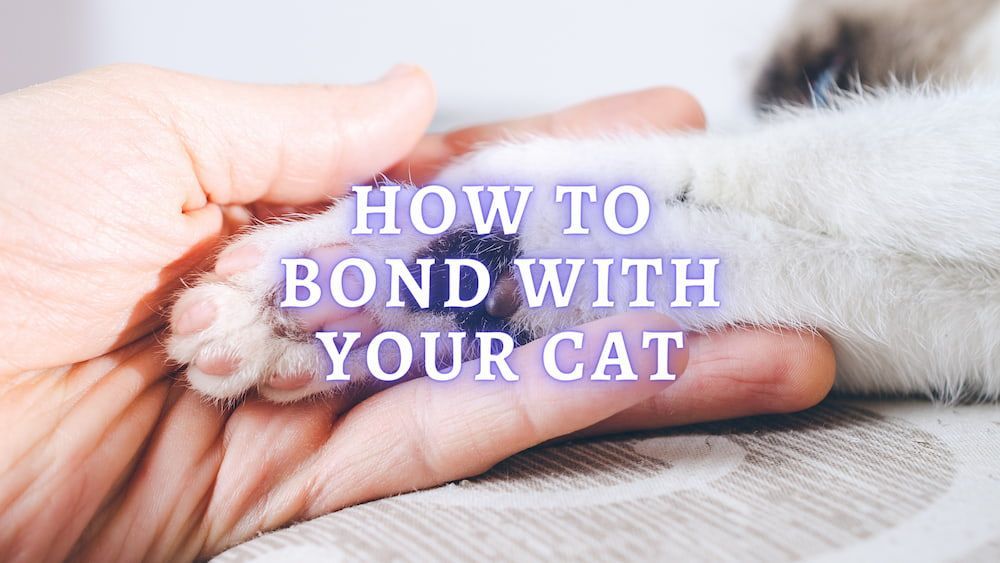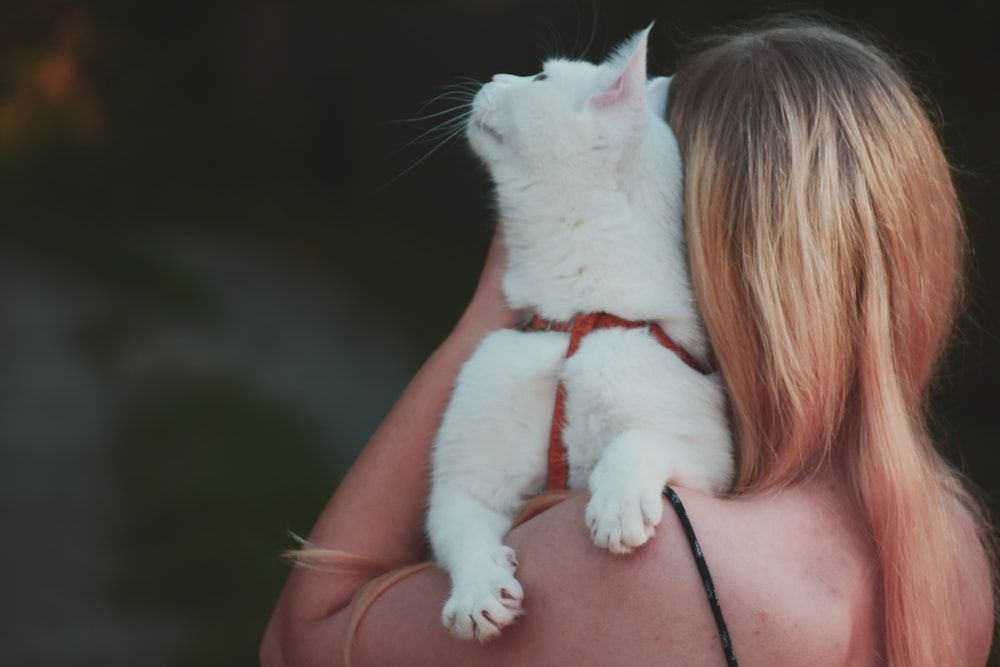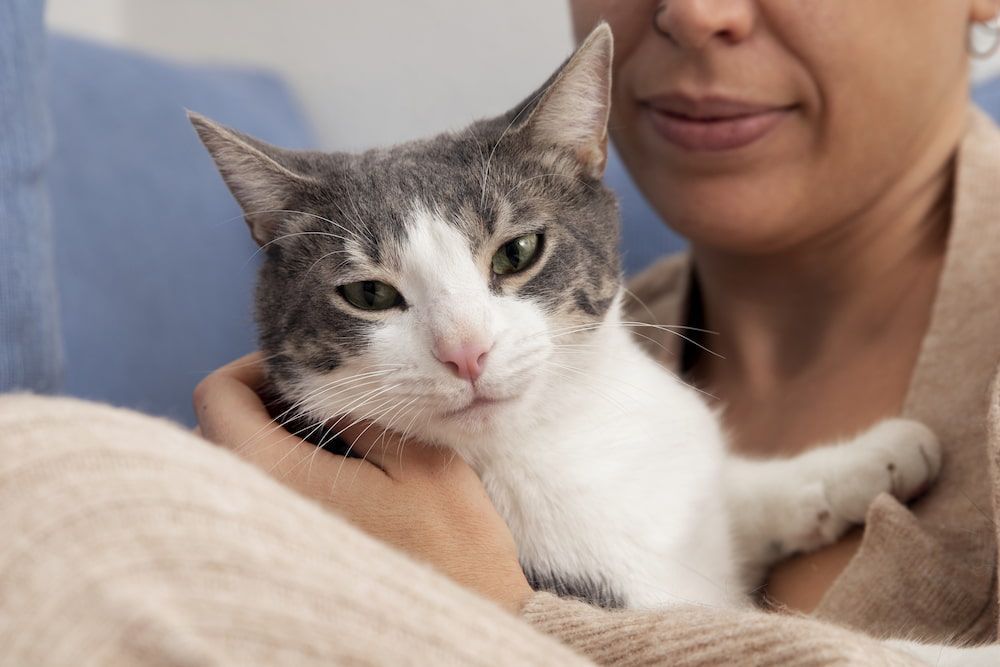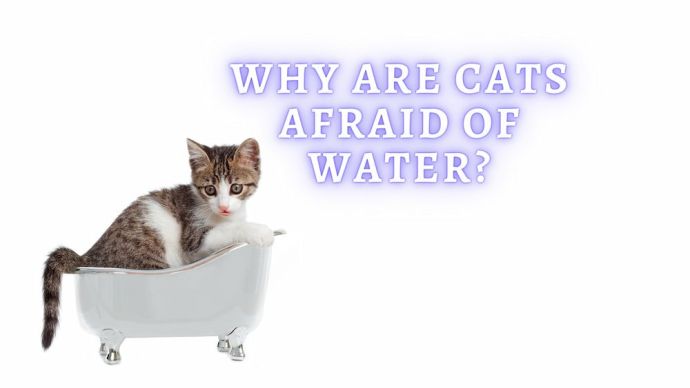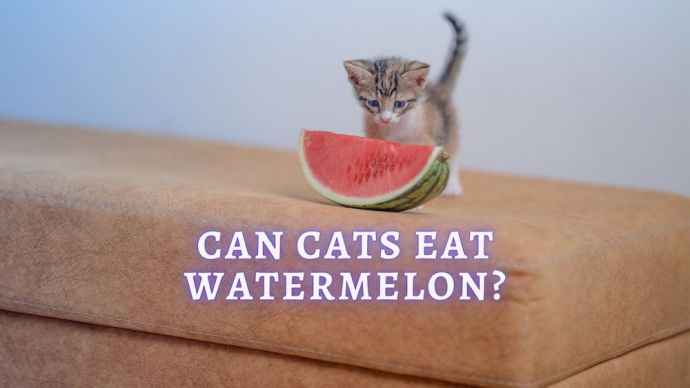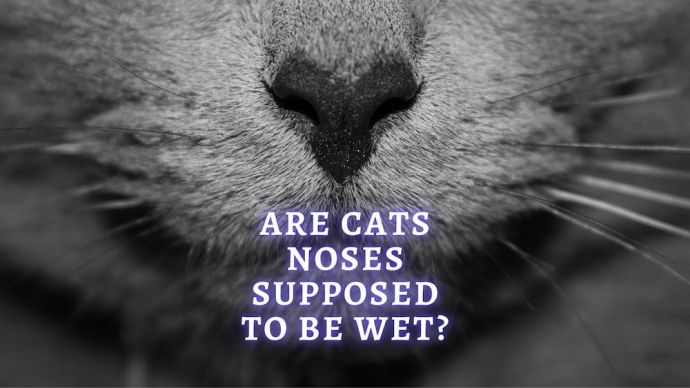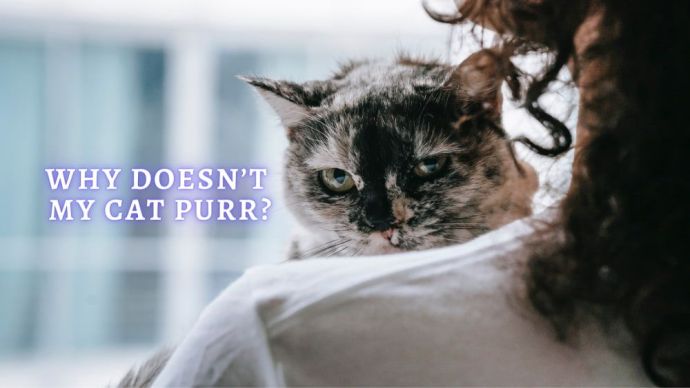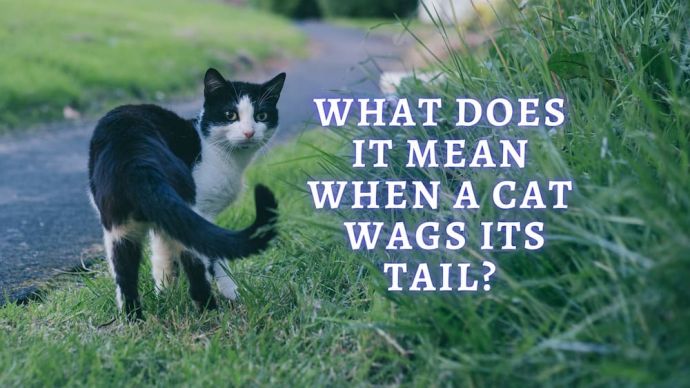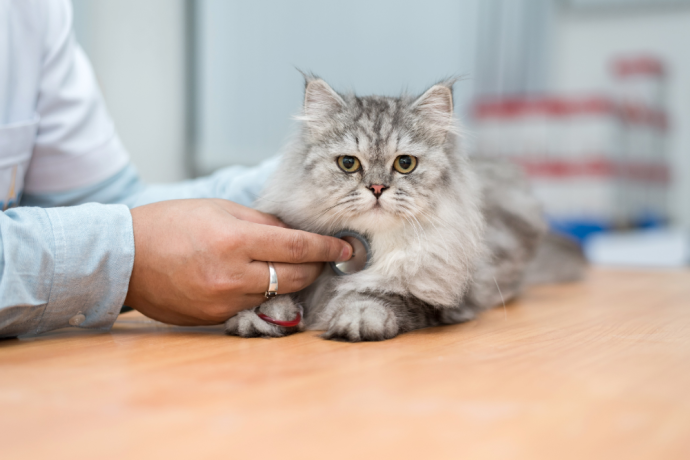How To Bond With Your Cat: 8 Steps to Build a Bond With Your Cat
Written by:
Author: Vicki Smirnova
Vicki Smirnova is a professional writer and editor who adores animals and helps readers get along well with their pets. She has been working in digital media for more than 5 years and has great experience writing content about lifestyle, including pets. Vicki specializes in dog health and nutrition, cat feeding, dog training. She is an aquarium lover and is passionate to write about fish care at home. Also, Vicki headed several websites and worked as a news editor.
View all 245 articlesLearn about our editorial process and veterinary review board.
Viewed: 252
Updated on: 04/13/2022
Cats are often kept as pets. But, unlike dogs, cats do not instantly trust people. The bond of cats must be won. Bonding with a cat can be a rewarding but challenging experience; however, many owners can build healthy, happy relationships with their animals. If you understand your cat’s body language, respect its boundaries and love it on its terms, you’ll be able to form a strong bond with your feline friend.
Ways to bond with your feline friend
A group of Swiss veterinarians and biologists conducted special studies to determine how cats behave towards their owners.
1. Let the cat come to you first
When you adopt a kitten, don’t try to shower all your bond and care on it right away. Let it understand where to find food and toys. It is better to watch from the side for a while – if everything is fine, the animal will come to you to get acquainted. You need to not pay too much attention because cats love freedom.
2. Touch gently: cat’s body language
When cats want to welcome each other, they sniff; you can do the same by bringing your finger to the cat’s nose. If your pet touches you with its nose, a particular path of rapprochement has begun.
3. Equip a place to relax
If it doesn’t like something, a pet needs personal space to retreat to and calm down. If a pet scratches, bites, and wags its tail in displeasure, do not go near it. Thus, you show it that you respect its interests – and the animal will respond with even more affection and devotion.
4. Don’t Overfeed
For a cat, several meals throughout the day are enough. Do not feed it too much – instead of getting a demonstration of bond, you will end up with weight gain and worsening overall health.
RELATED: Best Cat Food for Weight Loss (Vet Approved List)
5. Play with them
Playing with a cat is another great way to bond. Your pet will learn to associate you with positive things, and thus it will be more likely to be affectionate and friendly towards you.
Some toys are soaked in catnip, an herb that mimics a cat’s arousal. Mice, rabbits, and catnip balls are a good investment if you have a pet that is not interested in playing.
The best time to play is early morning and late at night. This is the time of the day when the pet has the most energy, and nightly games with the cat can induce it to sleep. You may not have time to play during these hours, but you can always buy your animal toys that it can play with itself.
5 to 10 minutes of daily play is recommended to keep your pet healthy and at a good weight. If you are unsure which toy to choose for your pet, keep in mind that cats are especially attracted to small moving objects while playing.
6. Don’t go outside
If the cat does not leave the house or apartment, its relationship with the owner will be much stronger. Involve your pet in your daily activities to get it more tired so it will sleep better at night.
7. Communicate
It is necessary to communicate with the pet as much as possible when it is still a kitten; in this way, the pet will become more attached to people and will become more in need of them in the future. When such a pet grows up, it will become much more friendly.
8. Choose the Right Breed
Before you get a pet, you need to understand how compatible you will be with it and whether or not you will be able to understand each other. This is a serious and responsible step, and you must be sure that you have the patience to establish a trusting relationship.
Some cats are very affectionate and will often want to be around their owner. Other cats, however, may hide for hours a day. Don’t force your pet to interact with you if it doesn’t want to. Cats are very independent, and their personalities cannot be changed.
Similarly, desired physical activity varies among pets. Some cats love to play and are often active, while others show indifference to toys. Once again, take your time. While certain behaviors – such as scratching and biting – can be taught to an adult cat, the basics of a cat’s personality remain fairly constant over time. However, you should encourage your cat to exercise for 5-10 minutes a day to maintain a normal weight.
READ MORE: Most Affectionate Cat Breeds
Signs your cat has bonded with you
According to experts, cats can really bond to their owners and can enjoy relationships with them. To help you understand if your pet has a strong affection for you, below are tips on interpreting the cat’s bond.[1]
- The cat treats you like a family. When pets do not feel threatened by rivals in their natural environment, they enjoy their company. If your pet repeats this behavior with you, then it sees you as a reliable friend.
- They follow you around. If the feline friend does not leave you, it wants to be around, which is a sure sign of strong affection.
- The pet loves to lie next to you when you sleep. Cats are intimidated by a person’s large height, so they may feel closer to you when they lie on the bed next to their owner.
- They blink their eyes slowly. Happy pets tend to slow blink their eyes softly. People can imitate this gesture, thus initiating contact.
- The cat “kneads” you. When a pet pushes you with its front paws, it is the same gesture when they wanted their mother to give them milk, which means they feel comfortable around you.
- Your pet is purring. Gentle purring is a very effective way to prove that the pet is pleased with you.
- She shows you her belly. Some pets display their bellies as a sign of enjoyment and complete trust in you, or want to play.
- The pet twitches its tail. The meaning of this gesture depends on the nature of the pet; for some of them, an active tail is a sign that they are annoyed, but it can also be a sign of affection.
Cats are attached to us. It is the affection that is the basis of their bond. It happens that they find their owners moved many kilometers away. Yes, pet love exists. Cats know how to bond with a person. This was proved by scientists from Monmouth University (New Jersey, USA). For several hours, 50 cats were taken, both domestic and from shelters as an experiment. They were deprived of the four most common things in a pet’s life: food, toys, smells and people. After that, all this was returned to the animals, and a large number of cats, 37%, immediately ran to people, not to food.
Studies have also been conducted that measured the level of the love hormone (oxytocin) in pets’ blood before and after interaction with the owner. The indicator after was, on average, 12% higher than before. According to this parameter, pets do not reach dogs, in which oxytocin jumped by as much as 57%, but still, the hormone of love in relation to a person is also produced in felines. [2]
READ MORE: Signs Your Cat Loves You
FAQ
How long does it take to bond with a cat?
The time of rapprochement with a pet depends on the pet’s individuality. Some cats are very affectionate and will often want to be around their owner. Other pets, however, may hide for hours a day.
How do you know if you have a bond with your adult cat?
The pet’s special behavior may indicate that she loves you: the pet rubs against you, loves to lie next to you, kneads you with its paws ab, twitches its tail and purrs.
How do you make your cat attached to you?
Relax, do not be nervous – pets perfectly feel their owner’s mood. Exude peacefulness, friendliness, optimism, whatever. The pet will definitely pay attention to your condition. With you, “everything is in order” – then the animal will do.
Article Sources:
- Bernstein, Penny. “Behavior of Single Cats and Groups in the Home.” PubMed Central (PMC), 1 Jan. 2006, ncbi.nlm.nih.gov/pmc/articles/PMC7149619/.
- McKenzi, Brennen. “Pheromones’ Therapeutic Use in Animals.” Veterinary Practice News, veterinarypracticenews.com/pheromones-therapeutic-use-in-animals/.
 Cat Veterinary Tips Cat Stomach Gurgling: Vet Advice on Why is Your Cat Stomach Gurgling?
Cat Veterinary Tips Cat Stomach Gurgling: Vet Advice on Why is Your Cat Stomach Gurgling? - 33736
- 4
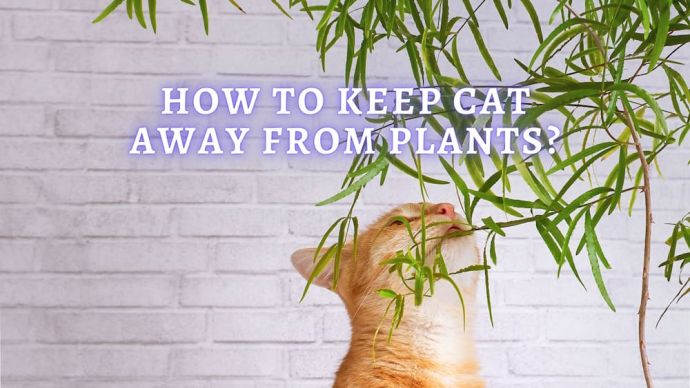 Cat Care How to Keep Cats out of Plants? How to Get Your Cat to Not Eat Plants?
Cat Care How to Keep Cats out of Plants? How to Get Your Cat to Not Eat Plants? - 403
- 0
 Cat Care Why Does My Cat Attack My Legs? 10 Reasons Why and What To Do About It (Vet-Approved Advice)
Cat Care Why Does My Cat Attack My Legs? 10 Reasons Why and What To Do About It (Vet-Approved Advice) - 45085
- 21
 Cat Veterinary Tips Cat Stomach Gurgling: Vet Advice on Why is Your Cat Stomach Gurgling?
Cat Veterinary Tips Cat Stomach Gurgling: Vet Advice on Why is Your Cat Stomach Gurgling? - 33736
- 4
 Cat Veterinary Tips My Cat Lost its Voice: Can Cats get Laryngitis? (Vet Advice)
Cat Veterinary Tips My Cat Lost its Voice: Can Cats get Laryngitis? (Vet Advice) - 22891
- 13









